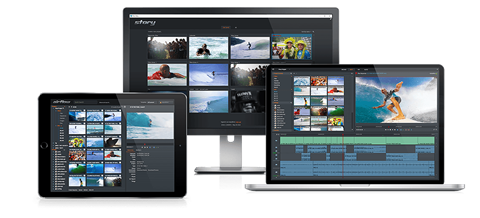Sunil Mudholkar, vice president of product management at EditShare on the value of handling metadata more efficiently

If we take for granted the rapid moves towards 4K and HDR Ultra HD, and IP infrastructures, then the major challenge facing production today is the need to create more content with less time to get it in front of an audience.
While of course we concentrate on bandwidth to move content and ensure timely deliveries, what actually makes all these workflows possible and efficient is metadata and automation. What we need is to make sure that the metadata is available to all with minimal manual intervention, and performing much of the heavy lifting as we seek to create ever more engaging productions.
The generation of metadata is already well established, using automated and human logging. The focus now needs to be on how we can use that metadata for maximum efficiency. That calls for a single brain, but with distributed, and continual, real-time synchronisation between that metadata services and all the other devices that need to use it.
Clearly, for maximum speed, you want to give each editor just the content needed for the package they are cutting. In an ideal world, that material would arrive at the edit workstation already organised in the format required by that software and that operator, with the content organised and the timelines aligned.
The cleanest way to organise this is to have metadata, content flow and workflow management software working in conjunction with the storage platforms. In turn, the storage platforms need to be capable of supporting multiple sources (the venue and the production base) and the cloud. Projects are then defined in this central workflow space, and assigned to individual editors as required.
This abstracts the workflow management from the editing. It follows, then, that the storage network and asset management system must be completely agnostic to editing software (and other post tools), but capable of delivering material in precisely the right format for each. It may even be that a single event requires the use of more than one editing package: a specialist fast turnaround editor for half-time highlights; the house standard software back at base; and maybe a third application for the editor working from home.
That is not a trivial requirement. Some software vendors are open and actively encourage plug-ins and integration; others have much more closed systems thanks to their legacy designs. But all must be accommodated if the concept is to work.
It calls for imagination on the part of the workflow designer to find ways to achieve that integration while keeping within the look and feel of the third-party edit software. These challenges must be addressed to provide a universal approach without performance limitations.
The goal is to seamlessly move complex projects between the different locations and the editing environments, regardless of which client software is chosen. That means full synchronisation including bins and project locking: the content and the structure must be delivered complete without the need for time to be lost in dragging and dropping. Synchronisation should occur server-side, with no required extra steps by the user. That synchronisation must be bi-directional, so decisions made by one editor are not only captured but available to other editors if required.
The result will be much greater productivity and efficiency. That in turn translates into a less stressful experience for the post-production team, and of course more engaging, entertaining and informative content for the viewer.

Sunil Mudholkar is vice president of product management at EditShare































No comments yet